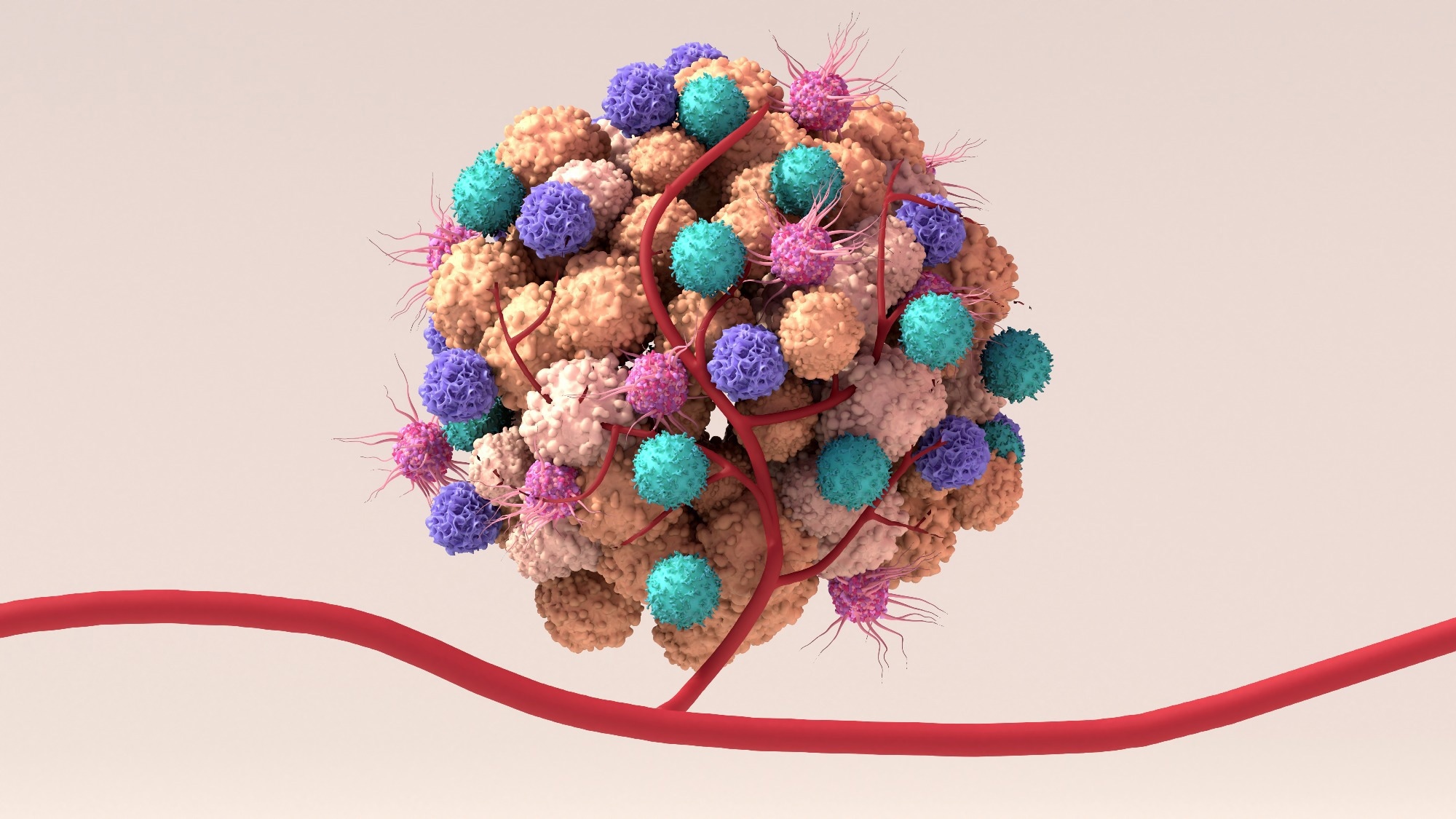In a recent study published in Cell, researchers investigated whether the observed tumor cellular heterogeneity and architecture result from stochastic and chaotic events or whether there is more coordination in the histopathological chaos of cancer. They also explored mechanisms shaping the highly complicated tumor landscape.
 Study: Coordinated cancer chaos. Image Credit: Design_Cells/Shutterstock
Study: Coordinated cancer chaos. Image Credit: Design_Cells/Shutterstock
Both embryology studies and oncology research activities are aimed at elucidating tissue growth mechanisms; however, they share limited conceptual and technical overlap. Morpho-genomic processes and tissue-level signaling are prime mechanisms in the field of embryology. Researchers have developed various approaches to explore the associated mechanisms; however, cell, genetic, and biological means have been predominantly focused upon, leaving the spatial aspects of tumor cells under-studied in the field of oncology.
About the study
In the present study, researchers analyzed CRCs (colorectal cancers) in three dimensions to assess tumor cell heterogeneity and the organizational patterns in tumor cells.
Multiplexed tissue imaging and spatial transcriptomics analyses were performed and three-dimensional reconstructions were analyzed. CRC architecture was determined based on continuously occurring transitions beginning from the center of the tumor center toward the invasive tumor margins. The morphological gradients in cellular behavior and genomic expression were analyzed.
The tumors showed structured architecture with coincident gradients in tissue morphology, cell type distribution, cell function, and gene expression. Multiple histological phenotypes were observed in a tumor. Colorectal cancers were found to resemble morphogenetic patterning involved in the development of organs during embryogenesis.
Cellular structures appearing as distinct features in two-dimensional images were found to be components of bigger three-dimensional features. E.g., perceived tumor budding, appearing as tiny and isolated clusters of cells in the two-dimensional images, was a large-sized fibrillar protrusion that was detectable only in the three-dimensional images.
The fibrils displayed gradually occurring changes in cellular proliferation and the expression of signature genes, such as during cellular epithelial-mesenchymal transition (EMT), underpinning that the epithelial-mesenchymal transition occurs gradually and not as a binary switch of fate. Gradually modulated and coherent architecture was observed even in the tumor microenvironment, in addition to the epithelium of tumors. Tertiary lymph-related structures appeared as discrete clusters of immunological cells in the two-dimensional images. Still, they exhibited interconnected networks with gradually occurring alterations in the composition of the immune cells when examined in three dimensions.
The gradual gradient of functionally distinctive tumor and immunological cells culminated in several pathways of T-lymphocyte count reduction among morphologically diverse areas of the tumor. The spatial analysis findings indicated that PD-1 (programmed cell death protein 1)-expressing T lymphocytes, occupying most of the tumor volume, might be inhibited by PDL1 (programmed death ligand 1)-expressing myeloid cells. Of interest, tumor cells situated at the budding site expressed PDL1 and could suppress T lymphocyte infiltration at the site.
Conclusions
To conclude, based on the study findings, chaotic solid tumors are, in fact, spatially organized tissues from a molecular to tissue scale, indicating that tumors evolve with autonomous patterns in their biological systems. The study findings provide a technological advancement and valuable biological insights into the morphogenetic mechanisms and tissue-level signaling pathways among tumor cells.
The findings indicated that the spatial orientation of intact tumors is imprinted in the morphological and cellular transitions, varying in magnitude and that large-scale spatial assessments must be performed to ass the biological variations in tumor samples. Future oncological approaches must integrate immunological cell phenotyping and transcriptomic analyses to characterize tumor cell biology further.
The utilization of histopathological advances to analyze intact tumor volumes and combining spatial assays such as metabolomic and genomic profiling with high-volume information processing and histopathological digitization to improve the understanding of tumors as complicated yet spatially structured masses with organized developmental pathways. It would be straightforward to analyze the grade and subtype of tumors; however, the rare areas of the tumor could be of clinical relevance and aid in determining tumor recurrence.
TMA (tumor microarrays must be utilized with caution in drawing biological inferences since TMA regions cannot capture large three-dimensional features and are not truly representative of the entire tumor. Orthogonal tissue elimination approaches could overcome the limitations of traditional slide analysis of tissues and enable the three-dimensional appreciation of tumors as spatially structured masses.